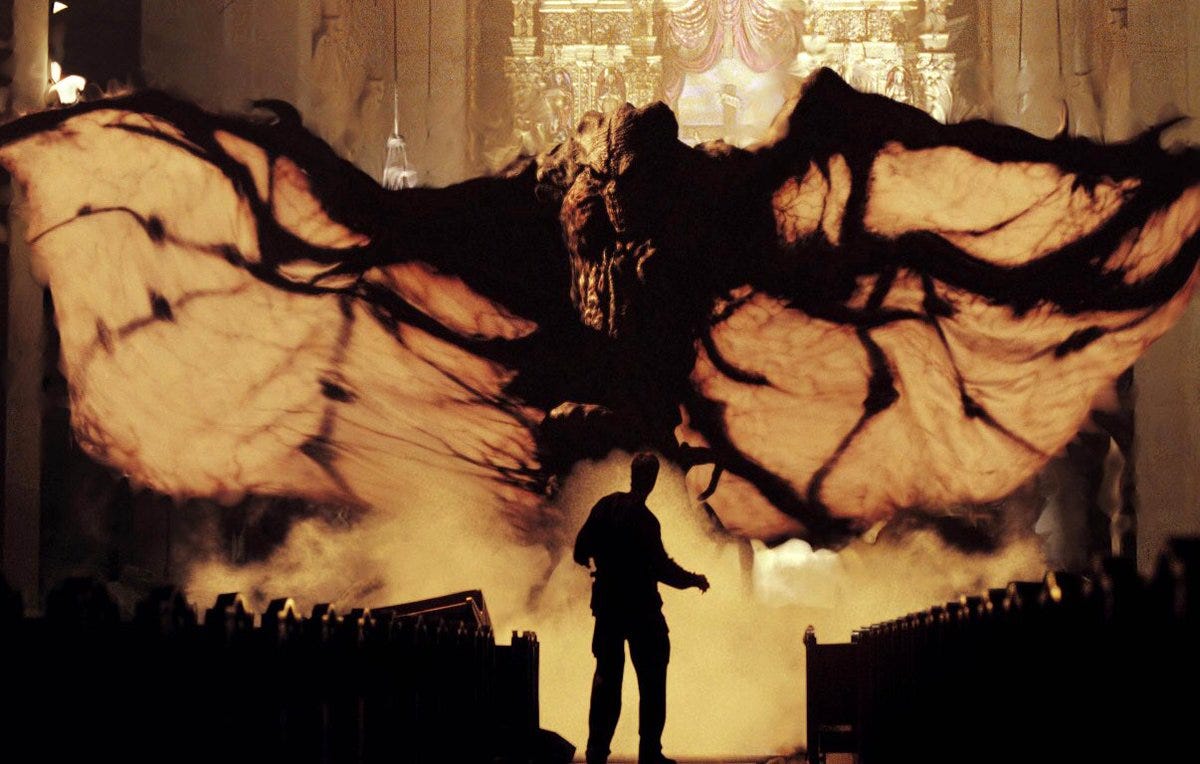5 New Year's Scenes With a Twist
The clock striking midnight, bringing in the New Year, traditionally is a time for toasts, celebrations and partying with friends and loved ones. It’s a time for new resolutions, new beginnings and fresh starts.
This is as true in movies as it is in real life. The ushering in of the New Year sparks joyous scenes of celebration in everything from New Year’s Eve, Waiting To Exhale and The Great Gatsby to Phantom Thread and The Godfather Part II.
More often than not, New Year’s scenes feature lovers getting together or reuniting: whether it’s Cary Grant and Deborah Kerr kissing on New Year’s Eve in An Affair To Remember; Tom Hanks and Meg Ryan, inspired by Grant and Kerr, finally meeting on top of the Empire State Building in Sleepless In Seattle; or Billy Crystal professing his love to Meg Ryan, again, at a New Year’s party in When Harry Met Sally.
But New Year’s scenes don’t have to be celebratory, romantic or schmaltzy. These five scenes from films that take place over New Year take a different, more unconventional approach. They demonstrate that you can engage and surprise audiences by giving the tropes and trappings of New Year’s celebrations.
SNOWPIERCER (2013)
In Bong-Joon Ho’s dystopian action sci-fi, the last surviving humans of a frozen earth are onboard a train continuously circumnavigating the globe. The downtrodden passengers in the lowest-class section revolt against the elite running the train, leading to a brutal, mass battle.
But every year at midnight on December 31st, the train crosses an ice-covered bridge and the combatants stop fighting to countdown to midnight and wish each other a Happy New Year, before resuming hostilities.
Prior to the ceasefire, which has echoes of the Christmas truce between soldiers in World War I, the audience had been placed in an unfamiliar and unrecognisable world, with much of humanity wiped out and most of those left leading squalid, oppressed lives. The New Year’s countdown and celebrations introduce a welcome dose of familiarity and a recognisable moment from our own lives, which allows us to identify more closely with the characters.
END OF DAYS (1999)
In this supernatural action horror, a former police detective, played by Arnold Schwarzenegger, has to protect an innocent young woman who’s been chosen to be the mother of Satan’s child. In the climactic scene, he has to stop Satan from impregnating the woman by midnight on New Year's Eve, which would usher in the end of days.
Whereas Snowpiercer uses the trope of the New Year’s countdown to bring light relief and familiarity to a tense, unfamiliar situation, End of Days uses the trope to establish a high-stakes, ticking clock. As the minutes count down to New Year and the turn of the 21st Century, an apocalypse looms unless Arnie can defeat Satan in time.
As well as creating mounting tension and suspense, this tapped into the fears and paranoia that existed at the time about Y2K and what would happen at the turn of the new millennium.
THE POSEIDON ADVENTURE (1972)
The party taking place on board an ocean liner bound for Athens in this 1970’s disaster movie has everything you’d expect from a New Year's celebration: rowdy revellers drinking and dancing as a live band plays; a countdown to midnight followed by a New Year’s toast; a raucous sing-along to Auld Lang Syne.
But the joyous party scenes are intercut with the concerned captain and his officers responding to a report of an undersea earthquake, then reacting with alarm as a huge tidal wave approaches, creating tension and suspense by making the audience aware of an impending danger which the party-goers are oblivious to. As the tidal wave hits, the party descends into chaos and carnage as the entire boat turns upside down.
The disaster could have happened at any time of the year, but setting it during a New Year’s celebration is a powerful storytelling choice. It considerably heightens the dramatic and visual impact, with revellers in tuxedos, ball gowns and party hats falling, sliding and crashing around the ship’s ballroom and what was supposed to be a joyous celebration turning into a horror show. The effect wouldn’t have been the same if they’d all just been asleep in their beds.
BOOGIE NIGHTS (1997)
Paul Thomas Anderson’s drama set in the adult film world of the 1970s and 1980s also gives the trope of the New Year’s party a shocking twist.
Looking for his wife at a house party, assistant director Little Bill catches her having sex in a bedroom. As the other party guests all countdown to New Year, Little Bill gets his gun from his car, shoots his wife and her lover, then turns the gun on himself, ushering in the 1980s with a bang.
Whereas audiences watching The Poseidon Adventure might have expected the ship to capsize during the party, since it’s the premise of the film, the party scene in Boogie Nights cleverly plays with, and confounds, audience expectations.
We’re expecting a New Year’s party packed with stars and professionals from the adult film world to be wild, raucous and debauched, with drug-taking and casual sex rife. The last thing we’re anticipating is a murder suicide. Little Bill so far has also responded meekly to his wife’s infidelities, so his actions are all the more surprising and shocking.
SUNSET BOULEVARD (1950)
Billy Wilder’s classic about the relationship between a struggling screenwriter and an ageing movie star features two, contrasting New Year’s parties: one familiar and conventional and the other strange and creepy.
Holed up in Norma Desmond’s decaying mansion, Joe Gillis discovers he’s the only guest at her New Year’s party. Dancing alone with Norma, with only a live orchestra and her butler in attendance, Joe’s further unsettled when she confesses her love for him. He escapes to a normal party at a friend’s house, but he has to leave and return to the mansion when he learns Norma has attempted suicide.
Like Boogie Nights, Sunset Boulevard intrigues and engages the audience by playing with our expectations of what a New Year’s celebration should look and feel like. Norma’s stuffy, opulent ball, with it’s complete lack of guests, isn’t anyone’s idea of a fun party, so we feel, and share, Joe’s unease and discomfort and empathise with his awkward situation.
When he flees to a party that matches our expectations of what a New Year’s celebration should be like, as it’s noisy, fun and packed with young revellers, we feel relief for him, as he’s back in the real world, with people his own age. We’re then dismayed, and feel a sense of dread, as he’s forced to return to the oppressiveness of Norma’s fusty mansion.
What I think is particularly interesting about all of these scenes is the way they combine familiar aspects of New Year: celebrating with loved ones and friends; the countdown: the midnight toast…with original story ideas: a battle on a Dystopian train; a murderous cuckolded husband; an ostentatious party with no guests…
This gives each scene a uniquely familiar quality and shows that if you are setting a film over New Year, rather than re-hashing the same party that audiences have seen many times before, you can create richer, more engaging scenes and sequences by giving your New Year’s celebration a uniquely original twist.










